WSC Spring Meeting 2014
Spring meeting WSC 2014
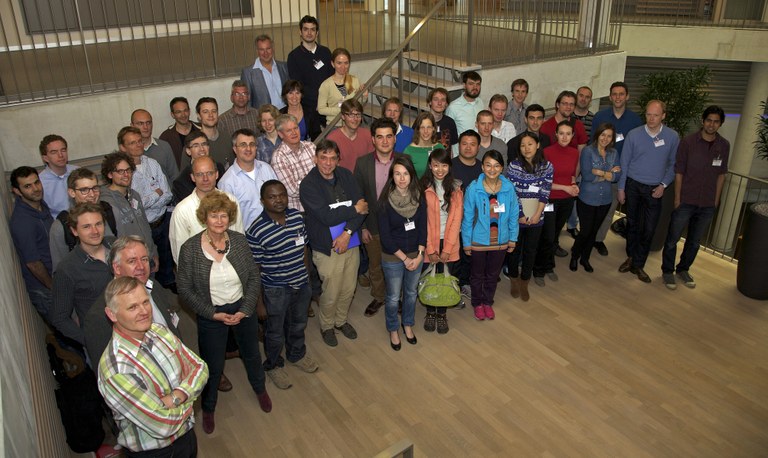 |
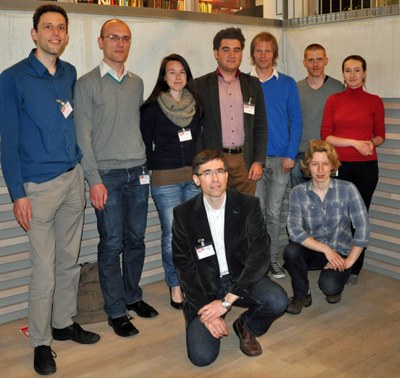 |
|
|
Participants Spring meeting WSC 2013 in Amsterdam |
Speakers Spring meeting WSC 2013 in Amsterdam Standing (f.l.t.r): Daan Huybrechs, Joris Degroote, Tinne Haentjes, Aram Markosyan, Jesse Dorrestijn, Tatyana Medvedeva. Sitting (f.l.t.r): Mike Botchev, Corien Prins. |
Friday May 23-rd, 2014, the Werkgemeenschap Scientific Computing is organizing, together with the Centrum Wiskunde & Informatica its yearly spring meeting in Amsterdam. A mixture of nine young and senior researchers have been selected to give a presentation on their research.
The program and the abstracts are shown below. Participation (including lunch) is free of charge but registration is obligatory.
Location
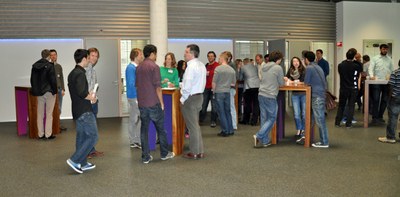 |
Centrum Wiskunde & Informatica Directions:
|
Program
| 09.30-10.00 | Registration, coffee/tea |
| 10.00-10.30 | Communication avoiding and hiding in extreme scale solvers[abstract] |
 |
Wim Vanroose (Research Group Applied Mathematics, U Antwerpen) is an expert in the analysis and development of numerical and computational methods for large scale simulation of complex systems in biology, physics and chemistry. He is also involved in the exascience life project a co-design project for life science simulations that combines research for all flemish universities in collaboration with Intel and Janssens Pharmaceuticals. He is als WP leader on numerical methods in the FP7 project EXA2CT (www.exa2ct.eu) that develops communication avoiding and hiding algorithms for extreme scale simulation. |
| 10.30-10.55 | A conjugate gradient based method for frictional contact problems [abstract] |
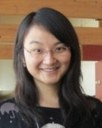 |
Jing Zhao obtained her MSc degree in Applied Mathematics in Northwestern Polytechnical University (China). Currently she is a PhD student in the Department of Applied Mathematics in TU Delft since 2010. Her research is to develop fast numerical solvers for the linear and non-linear optimization models, arising from the elastic contact problem with applications in the railway industry. This work is under the supervision of C.W. Oosterlee and E.A.H. Vollebregt. |
| 10.55-11.20 | Low-dose discrete tomography: algorithm and Matlab implementation [abstract] |
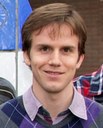 |
Folkert Bleichrodt obtained his BSc and MSc degree in Mathematics and Scientific Computing (cum laude) respectively at Utrecht University in the Netherlands. After his master's studies, he decided to pursue a PhD degree and joined the Scientific Computing group at CWI in Amsterdam. His research is focused on tomographic imaging and in particular parameter estimation and optimization. His supervisor is Joost Batenburg. |
| 11.20-11.45 | Coffee/tea break |
| 11.45-12.10 | Multiwavelet troubled cell indicator for discontinuous Galerkin methods [abstract] |
 |
Thea Vuik is currently a PhD student in Applied Mathematics at TU Delft. She concentrates on the development of higher-order numerical methods for hyperbolic partial differential equations. Specifically, on limiting and troubled-cell detection using multiwavelets and discontinuous Galerkin methods. |
| 12.10-12.35 | Variational finite element method for non-autonomous systems [abstract] |
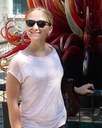 |
Elena Gagarina studied mathematics in Novosibirsk State University. Since 2010 she is a PhD student of the Mathematics of Computational Science (MaCS) group in the University of Twente. The title of the project is "Compatible Mathematical Models for Coastal Hydrodynamics ". The main focus of research lies in (discrete) variational principles for water waves. The research interests are Galerkin finite element methods, Hamiltonian systems, symplectic integrators. |
| 12.45-13.45 | Lunch at Polder, Science Park 205 |
| 13.45-14.10 | Skew-symmetric matrices and accurate simulations of turbulent compressible flow [abstract] |
 |
Wybe Rozema studied physics and applied mathematics at the University of Groningen. He is currently a PhD student computational fluid dynamics at the University of Groningen and the National Aerospace Laboratory NLR. His research focuses on numerical methods and large-eddy simulation models for compressible flow. |
| 14.10-14.35 | Modeling dusty Kelvin-Helmholtz instabilities in molecular clouds [abstract] |
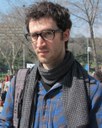 |
Tom Hendrix studied physics and astronomy at the UHasselt and the KU Leuven (Belgium). As a PhD student at the Centre for mathematical Plasma-Astrophysics (CmPA, KU Leuven), he is involved in the development of the dust module of the MPI-AMRVAC fluid dynamics code. His scientific interests currently focus on topics such as dust physics, fluid instabilities, numerical methods and observations as well as simulations of protoplanetary disks and molecular clouds. |
| 14.35-15.00 | Hierarchical moment closure approximations for the Boltzmann equation [abstract] |
 |
Michael Abdel Malik obtained his B.Sc. degree (with High Honors) in Engineering and Materials Science from the German University in Cairo (Egypt). He received an M.Sc. degree in Applied Mathematics (Cum Laude) and another M.Sc. in Mechanical Engineering (Cum Laude) from Eindhoven University of Technology (TUE). He is currently a PhD in Mechanical Engineering at TUE. His research interests include computational mathematics and mechanics, hyperbolic systems, kinetic theory, model adaptivity and uncertainty quantification to name a few. |
| 15.00-15.25 | Coffee/tea break |
| 15.25-15.55 | A data assimilation approach to reconstruct the past climate states [abstract] |
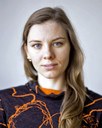 |
Svetlana Dubinkina is an applied mathematician whose current research is focused on statistical properties of numerical methods, data assimilation, and paleoclimate. She earned a PhD degree in applied mathematics from University of Amsterdam in 2010. Since 2014 Dr. Dubinkina is a tenure tracker at CWI. Prior to joining CWI, she conducted research in applied mathematics and paleoclimate modelling at Université Catholique de Louvain in Belgium. |
| 16.00-16.45 | Drinks |
Organisation, participation and registration
Registration
Participation (including lunch) is free of charge but registration is obligatory.
Contact
Questions? Please ask: Margreet Nool
Abstracts
Wim Vanroose (University Antwerp)
Communication avoiding and hiding in Krylov solvers
Communication and synchronization overhead has always been the main concerns in parallel computing. But recently there is a unstoppable trend that dramatically increases the concurrency on all hardware. This introduces several communication bottlenecks in Krylov solvers most importantly the latency of global reductions and the limited bandwidth to the memory. In this talk we discuss how Krylov algorithms can be redesigned to remove some of these communication bottlenecks.
[back]
Jing Zhao (TU Delft)
A conjugate gradient based method for frictional contact problems
In the simulation of railway vehicles dynamics, the interaction between the vehicles' wheels and the rails attracts a lot of interest, involving the solution of frictional contact problems. The frictional stress arises between two contacting bodies when they are brought into relative motion. The question is to find out which parts of the surfaces are sticking together versus where local relative sliding occurs, and further to find the distribution of frictional stress. Fast solvers are demanded for such problems.
We would like to present a conjugate gradient based method, called TangCG, which is incorporated in an active set strategy. One significant difference with the conventional solvers lies in the change of unknowns in the slip area, where the magnitude of tractions reaches the traction bound. Instead of using tractions there, we solve for angles, since they uniquely determine the tractions. This yields a transformation of the governing equations. A linearization technique is employed for some necessary approximation. Moreover, the fast Fourier transform (FFT) is adopted to accelerate the matrix-vector products encountered in the algorithm. Numerical tests confirm the efficiency and robustness of our method.
[back]
Folkert Bleichrodt (Centrum Wiskunde & Informatica)
Low-dose discrete tomography: algorithm and Matlab implementation
Tomography is a non-invasive technique for reconstructing an object from a series of projection images. These projection images can, for example, be obtained by medical scanners using X-rays, or by electron microscopes. By solving a challenging and large-scale inverse problem, a fully 3D image can be obtained from the projection images.
In many cases, the scanning time is limited due to sensitivity of the object to the scanning beam (e.g. when imaging biological samples), or due to time constraints, resulting in either a reduction of the number of projections or an increase of the noise present in the measured data. If the object consists of only a few materials, the corresponding grey values in the reconstruction can often be known a priori or can be estimated. Using this prior knowledge during the reconstruction results in superior quality of the reconstructed images. This domain of tomography is called discrete tomography.
In this talk I will present a new method for discrete tomography that is specifically suited for noisy projection data. Current methods are not well suited for dealing with high noise levels. We introduce a sophisticated regularization step for an existing discrete tomographic reconstruction method, which significantly improves the algorithm’s robustness to noise. The implementation of such methods is not trivial, since memory and performance issues are critical in order to process real-world data in reasonable time. We present a Matlab framework that encapsulates high performant code as linear operators in Matlab. Using these operators, our algorithm can be presented in a linear algebra framework in a very compact manner, while still achieving high performance.
[back]
Thea Vuik (TU Delft)
Multiwavelet troubled cell indicator for discontinuous Galerkin methods
In general, solutions of nonlinear hyperbolic PDE's contain shocks, or develop discontinuities. Numerical treatment of these artifacts is generally through the application of a limiter or by adding artificial viscosity. The cells where such treatment is necessary are referred to as troubled cells. To efficiently apply numerical methods in the case of discontinuous solutions, it is useful to have an accurate troubled-cell indicator. This aids in restricting the use of a limiter or artificial viscosity to only regions where it is necessary. In this presentation we discuss the use of multiwavelets for troubled-cell indication applied to discontinuous Galerkin (DG) methods. We explain the relation between DG coefficients and the multiwavelet decomposition of the approximation.
[back]
Elena Gagarina (University Twente)
Variational finite element method for non-autonomous systems
The time-discontinuous Galerkin finite element method will be explored to obtain (pseudo-)symplectic time integrators, both for autonomous and non-autonomous systems. First, variational dynamics will be introdued for classical time-dependent mechanical toy problems, followed by nonlinear potential flow water wave models in space and time. The variational formulation is directly associated with the conservation laws of the system, such as energy conservation and preservation of the phase space structure. Discrete variational principles will be constructed to preserve these properties of the continuum systems also at the discrete level. The main reason to investigate these numerical schemes is to obtain stable time integrators for highly nonlinear water waves and accurate for long time integration. Numerical simulations using the novel (pseudo-)symplectic time integrators will be compared with laboratory experiments.
[back]
Wybe Rozema (University of Groningen and the National Aerospace Laboratory NLR)
Skew-symmetric matrices and accurate simulations of turbulent compressible flow
In finite-volume methods for compressible flow, small turbulent flow structures can cause numerical instability of a simulation by transferring internal energy to kinetic energy through convective transport. This convective instability is usually canceled by artificial dissipation of the spuriously transferred kinetic energy. Although this can stabilize simulations of compressible flow, artificial dissipation can also have undesirable side effects, for example numerical delay of the transition to turbulence.
In this talk it is shown that the convective instability can also be eliminated by preserving conservation of kinetic and internal energy by convective transport in the simulation method. It is shown that this conservation law can be related to a skew-symmetric matrix if the compressible Navier-Stokes equations are expressed in unusual square-root variables. This relation of conservation laws and matrix symmetries is used to construct a fourth-order accurate skew-symmetry-preserving discretization on general curvilinear grids. It is demonstrated that preserving the skew-symmetry of convective transport improves the stability of a simulation method, and allows for simulations of the transitional flow over a delta wing without artificial dissipation.
[back]
Tom Hendrix (Centre for mathematical Plasma-Astrophysics/KU Leuven)
Modelling dusty Kelvin-Helmholtz instabilities in molecular clouds
Dust particles have a large (and often unknown) variety of sizes and compositions, therefore including the effect of dust in the analysis of the dynamics of dust containing systems causes a significant increase in the complexity of numerical and analytical analysis. Furthermore, in most cases the density of the dust is several orders of magnitude lower than the local gas density, and as a consequence the contribution of dust on the dynamics has often been ignored.
In this talk we will shed light on how we aim to investigate the importance of dust on astrophysical fluid dynamics, namely by performing numerical simulations using the multi-fluid gas+dust MPI-AMRVAC code with different dust species representing different fluids. Specifically, we will elaborate on how dust tends to alter the formation of one of the most frequently encountered in the astrophysical fluid dynamics, namely the Kelvin-Helmholtz instabilities (KHI). From both 2D and 3D simulations we infer how these instabilities can increase the local dust density by several orders of magnitude. Also, a clear dependency on dust sizes is seen, with larger dust particles displaying significantly more clumping than smaller ones. Ultimately, we connect our finding of the dusty KHI to observations of molecular clouds and see how the KHI may explain some of the features in these observations. To do so, we have coupled the output of the MPI-AMRVAC code with the SKIRT radiative transfer which allows us to compare observations and simulations directly.
[back]
Michael Abdel Malik (Eindhoven University of Technology)
Moment closure hierarchies to approximate solutions of the Boltzmann equation
This work applies the moment method onto a generic form of kinetic equations, given by Boltzmann’s equation (BE), to simplify kinetic models of particle systems. This leads to a hierarchy of moment systems and the corresponding moment closure problem. We propose a generalization of the moment-closure setting from the Kullback-Leibler divergence (i.e relative entropy) to the class of generalized divergences. The corresponding moment systems are symmetric hyperbolic, tractable and retain structural properties of BE. Numerical approximation of the moment system using the discontinuous Galerkin finite element method will be presented. Finally, opportunities pertaining to goal-oriented adaptive modeling provided by the hierarchical structure of the moment equations will be highlighted.
[back]
Svetlana Dubinkina (Centrum Wiskunde & Informatica)
A data assimilation approach to reconstruct the past climate states
Due to the importance of placing recent 20th and 21st century warming in a longer‐term perspective, the climate of the last millennium has received considerable attention over the past decade. A new but highly appealing approach to reconstruct the past climate states is data assimilation. Though data assimilation is well developed in some domains, its application to the past climate state reconstruction faces new challenges. I will talk about these challenges and also present some results of a data-assimilation approach in paleoclimatology.
[back]

